27. Aug 2021 - DOI 10.25626/0130
Gero Fedtke is a research associate at the Chair for the Comparison of European Dictatorships at Friedrich-Schiller-University, Jena. He studied Russian and East European History at Cologne University and obtained a PhD in History from Jena University. He has previously worked with the Buchenwald Memorial Foundation on the History of Forced Labour in Nazi-occupied Europe. His research focuses on Russian and Soviet Rule in Central Asia and Soviet literature on Nazi Concentration Camps.
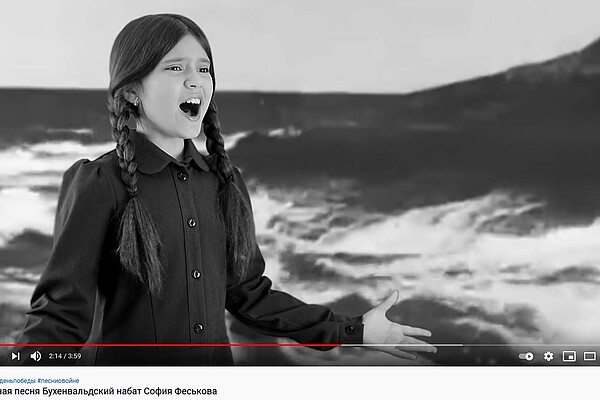
In September 2020, the Poetry Theatre in Makhachkala, the capital of the Caucasian Republic of Dagestan, Russia, staged the play Vzorvannyi ad (A Hell Blown Up) based on the poem Krasnye Zhavoronki (Red Larks) by Avar-speaking poet Fazu Alieva (1932-2016). A team of talented young actors recited verses Alieva had written in the early 1980s after a visit to the Buchenwald memorial, then in East Germany, using Sergei Severtsev’s Russian translation. Alieva’s poem, structured around nine circles inspired by the Inferno in Dante’s Divine Comedy, centres on the thoughts and feelings evoked by her visit to the memorial. It also tells a story about resistance in the German concentration camp, which culminates in the liberation of the prisoners by their own hand. The ninth circle of the poem, in which they blow up the hell they are incarcerated in, figures prominently in the theatre production – hence the title.
Buchenwald occupied a fixed place in the Soviet collective memory of the Second World War and continues to do so in the post-Soviet space even today. Buchenwald symbolized and still symbolizes the atrocious Nazi regime and epitomises the – in the end victorious – fight of the ordinary (Soviet) man against Nazi evil even in the most desperate situation. Its place in Russia’s memory culture is intrinsically tied to the song Bukhenval'dskii nabat (The Alarm Bell of Buchenwald), a song regularly performed at festivities commemorating the Soviet Victory on May 9. The text was written by Aleksandr Sobolev in September 1958, inspired by news of the opening of the Buchenwald Memorial (near Weimar) with its prominent bell tower. It was set to music by Vano Muradeli and first performed as a song in 1959. The song quickly skyrocketed to enormous popularity, which it retains until today. In 1966, former Buchenwald prisoner Ivan Smirnov published his memoirs under the song’s title. As did many others before her, Fazu Alieva’s poem pays tribute to Sobolev’s famous work. As Jamilya Mirzoyeva, director of the recent theatre production, put it:
Of course, there is a connection between the poem ‘Red Larks’ and the song ‘The Alarm Bell of Buchenwald’ – the enormous pain of loss, the impossibility of comprehending the brutality in which millions of entirely innocent people were annihilated, and of course admonishing future generations [to maintain peace]: ‘Lyudi mira, bud'te zorche vtroye / Beregite mir, beregite mir!’”[1]
This famous closing line of the song proves to be as up to date as when it was written.
In today’s Russia, the song is performed in various contexts ranging from official events to the semi-official to the private. The song is standard at celebratory concerts held on May 9 as a part of state-organised festivities; it is performed in schools as part of Victory Day celebrations, often with theatrical elements and/or as a ballet; it is also sung or recited by ordinary people in private, as a moment dedicated to remembering the Soviet victory or shared in private networks like vkontakte or on YouTube. This holds true for many of the post-Soviet republics, not just the Russian Federation. Here, I will analyse the spectrum of these performances and situate it in the context of Soviet and post-Soviet popular culture and remembrance of the Second World War.
Considering the enormous popularity of the song across the post-Soviet space, its author Aleksandr (Isaak) Vladimirovich Sobolev (1915 – 1986) is surprisingly obscure. Information about him stems mostly from the works of his widow Tatyana (1922-?), published after the fall of the Soviet Union.[2] Sobolev was born into a destitute Jewish family in Ukraine. He moved to Moscow in 1937 after the death of his mother, where he lived with his elder sister and worked as a plumber. He also began to write and eventually gained employment as a journalist. In 1942, he was conscripted, but was discharged in 1944 after being wounded several times. He lost his new job at a factory newspaper, and – having been classed as a disabled veteran, category 2 – was no longer allowed to work full-time. He received only a small disability pension. After Tatyana lost her job as a journalist due to antisemitic repressions in 1954, the two lived in extreme poverty.
Sobolev, who mostly wrote poetry, rarely managed to get published during his lifetime. The story of how he created Bukhenval’dskii nabat was recounted by Tatyana only in 1996, and published a year later in the popular journal Ogonyok.[3] According to his widow, Sobolev heard the news about the opening of the GDR Buchenwald memorial on the radio. Impressed by the story of the bell tower being erected with money donated by ordinary citizens, he wrote the poem in a mere two hours and finalized it together with Tatyana. Both of them realized the potential of the poem and tried but failed to publish it in the Soviet Union’s central newspaper Pravda. Instead, Sobolev managed to publish the poem in the newspaper Trud, which had previously printed some of his poems. After a chance encounter with Composers’ Union secretary Sergei Aksyuk, Sobolev sent the poem to the composer Vano Muradeli, who wrote a score, but was unsuccessful in having the song performed and broadcast on the radio. Sobolev subsequently submitted the song to the committee organizing the World Youth Festival, which led to the song’s successful premiere at the festival in Vienna in 1959.
Bukhenval'dskii nabat
Lyudi mira, na minutu vstan'te! Slushaite, slushaite Gudit so vsekh storon Eto razdayetsya v Bukhenval'de Kolokol'nyi zvon Kolokol'nyi zvon Eto vozrodilas' i okrepla V mednom gule pravednaya krov' Eto zhertv ozhili iz pepla I vosstali vnov' I vosstali vnov' I vosstali, i vosstali I vosstali vnov'! | People of the world, stand up for a minute! Listen, listen It booms from all sides There sounds in Buchenwald A bell-ringing A bell-ringing There is, new-born and grown strong In brazen booming, the righteous blood Victims rose from the ashes And arose again And arose again And arose, and arose And arose again! |
Sotni tysyach zazhivo sozhzhennykh Stroyatsya, stroyatsya V sherengi k ryadu ryad Internatsional'nye kolonny S nami govoryat S nami govoryat Slyshite gromovye raskaty? Eto ne groza, ne uragan Eto vikhrem atomnym obyatyi Stonet okean, Tikhii okean Eto stonet, eto stonet Tikhii okean Eto stonet, eto stonet Tikhii okean | Hundreds of thousands burnt alive Line up, line up, In rows, shoulder to shoulder. International columns Speak to us Speak to us Do you hear the thunder of the chimes? It’s neither tempest nor hurricane Embraced by nuclear gales The ocean groans, the Pacific Ocean. It is groaning, it is groaning, The Pacific Ocean. It is groaning, it is groaning, The Pacific Ocean. |
Lyudi mira, na minutu vstan'te! Slushaite, slushaite Gudit so vsekh storon Eto razdayetsya v Bukhenval'de Kolokol'nyi zvon Kolokol'nyi zvon Zvon plivet, plivet Nad vsei zemleyu I gudit vzvolnovanno efir Lyudi mira, bud'te zorche vtroye Beregite mir, beregite mir Beregite, beregite, Beregite mir! Beregite, beregite, Beregite mir! | People of the world, stand up for a minute! Listen, listen It booms from all sides There sounds in Buchenwald A bell-ringing A bell-ringing The Ringing is floating, floating Through the whole world. The ether is buzzing worriedly. People of the world, be threefold vigilant Stand on guard for peace, stand on guard for peace! Stand on guard for, stand on guard for peace! Stand on guard for, stand on guard for peace! |
After its debut in Vienna, the song’s popularity in the Soviet Union grew when it was adopted into the repertoire of the Soviet Army’s Song and Dance Ensemble. The list of the song’s performers is long and full of famous names. It became an intrinsic part of Soviet antifascist performances, and has thus been treated – if at all – as a part of the ‘official’ canon rendering homage to the regime and serving its propagandistic aims. Yet the tale of its creation and early career already shows that the story of this song is more complex. It highlights the inconsistency of Soviet reality, the limits of centralized control and the overlapping of private and public memory practices.
To start with, while Bukhenval’dskii nabat was not written to serve state antifascist propaganda, it turned out to fit this purpose perfectly. The text allows for rather diverging interpretations; a close reading reveals that an antifascist reading is probably not what Sobolev had in mind. Buchenwald remains abstract in his poem. It is the location of the bell tower and the location where victims rise from their ashes and admonish us to maintain peace. The victims themselves and the circumstances of their deaths remain obscure. The second stanza describes an analogous resurrection of “hundreds of thousands burnt alive”, but here Sobolev no longer talks of Buchenwald alone, but includes the victims of Hiroshima and Nagasaki – both in terms of their number and the circumstances of their death by referring to the weapon that killed them: “embraced by nuclear gales, the Pacific groans.” The victims of Buchenwald were not burnt alive, but the victims of the nuclear bombings were, as were those killed in the conventional bombing campaigns and many of those murdered during the brutal German occupation of East European territories conquered by the Wehrmacht. Contemporaneous Soviet media reports described these atrocities during the war, including the murder of those identified as Jewish, who were locked inside a burning synagogue, and the burning of entire villages in Nazi “battles against partisans.”[4] In short, Sobolev was writing more generally about the victims of the Second World War.
Sobolev thus connected the memory of the Second World War to the imminent danger of nuclear annihilation. The groaning Pacific in his poem was the Pacific of the year in which he wrote it: Between April and August 1958, the United States detonated 35 nuclear bombs in a series of tests on the Marshall Islands as part of ‘Operation Hardtack’ – thus the appeal to “stand on guard for peace”. Ultimately, there is nothing specifically antifascist about the text, and it is not about Buchenwald as a Nazi concentration camp. Sobolev wrote an anti-nuclear peace song und used Buchenwald as a symbol for the atrocities of mankind’s most recent war. Tatyana Soboleva’s later report confirms this reading, pointing to Sobolev’s own wartime experience and his worries about a new war as the source material of the poem:
Mankind has a powerful weapon of mass destruction at its disposal… The memory of Hiroshima and Nagasaki is ineffaceable. The world is on the brink of a new war, maybe the last in the history of mankind. […] If a bell begins to ring in Buchenwald, thirteen years after the end of a war that engulfed millions of lives, this means: there is no peace in the world. The poet’s worries and fears for the fate of this world are unfortunately substantial and justified. It is time to ring the alarm bell.[5]
Indeed, in other known works written by Aleksandr Sobolev, nuclear war is a prominent theme. The works thematising the Second World War reflect on various issues, from soldiers’ bravery (until 1958), the violence of fighting at the frontlines (later poems) to soldiers at the rear shirking their duty (the novel Efim Segal – The Shell-Shocked Sergeant). They do not reflect themes such as the German occupation regime or the Holocaust.
Yet the poem can easily be understood as referring mostly or even exclusively to the criminal German war against the Soviet Union with all its atrocities and crimes, adding a layer of antifascist meaning. This interpretation was already visible in July 1962 at the World Congress for Disarmament and Peace in Moscow. During the finale of the concert dedicated to the congress, Bukhenval’dskii nabat was performed by ten choirs, occupying a more prominent place than Evtushenko’s “Do Russian People Stand for War”. Made to rhyme and fit the melody, the loose translations of the text prepared for the international audience created a more explicit connection to fascist Germany. In the English version prepared by an anonymous translator, the bell-ringing is explained as “the tortured voice of Nazi victims”. The “hundreds of thousands burnt alive” are rendered as “sons of many lands, the planet’s martyrs”, thus detaching them from the “moans of the Pacific”.[6]
Over the years, this second understanding has prevailed. Bukhenval’dskii nabat fitted neatly into the Soviet policy of presenting itself as a power engaged in maintaining peace and the United States as the nuclear aggressor, which employed it as an antifascist anti-nuclear peace song referencing the memory of the Second World War. It was performed at international gatherings and conferences, as well as festivals, celebrations, and commemorative events throughout the Soviet Union. It was also widely performed in schools as a part of socialist competitions, concerts, and commemorative events.[7] After the fall of the Soviet Union, it maintained its prominence, and was transformed into a patriotic song, performed most often in connection with Victory Day celebrations, which had replaced October Revolution Day as the central event in the commemorative calendar. The Second World War came to serve as a new foundational myth for the Soviet Union, where the war with Germany was called the Great Patriotic War – a term still in use in most post-Soviet republics. Especially in Russia, it continues to serve this legitimizing role, casting the Putin administration as the rightful heir to the heroes who had defended the fatherland against the evil Nazi aggressor. Bukhenval’dskii nabat’s significance in official historical culture has even increased in recent years as its new interpretation as a patriotic song adapts to the moment.
Since the fall of the Soviet Union, the anti-nuclear aspect of the song has vanished step by step from performances. In a 1971 film, baritone Muslim Magomaev performed Bukhenval’dskii nabat to images of the Salaspils memorial in Soviet Latvia. When the accompanying choir sings of the groaning Pacific, we see a stormy sea and an explosion reminiscent of the mushroom clouds produced by nuclear bombs.
In the recent years, Evgeny Kungurov has become one of the more prominent performers of Bukhenval’dskii nabat. A clip from 2017 uses a mix of historic footage of liberated concentration camp prisoners, excerpts of feature films set in concentration camps, and pictures of memorials – among them, again, Salaspils. The groaning of the Pacific is illustrated by a stormy sea sequence, but any direct reference to a nuclear bomb explosion is missing.
Child singer Sofiya Fes’kova, using the same clip for her 2020 version, provides an explanation in line with the antifascist reading:
Although the song is distinctly about the Buchenwald concentration camp (Germany), it sounds as a reminder of fascist crimes, of the innocent victims, the memory of who is sacred. […] Bukhenval’dskii nabat is a song which has orbited our planet and become a symbol of the peoples’ fight for peace.
The waves connected to the mention of the Pacific have no particular meaning in this interpretation.
Consequently, the clip used in Kungurov’s performance of the song at the central Victory Day celebrations on Poklonnaya Hill in Moscow in 2018 completely ignored the reference to the Pacific. Instead, it amplified the connection to the Holocaust by including more pictures of memorial sites at former concentration and annihilation camps, including, of course, Buchenwald, but also Sobibór and Bergen-Belsen. When Kungurov sang of the groaning Pacific, the images on the screen switched to the iconic picture of the Auschwitz camp gate, which appears several times in the clip show.
The Great Patriotic War as such is also made visible in clips presenting Bukhenval’dskii nabat, such as during a school performance from 2020, that made extensive use of historical footage of military fighting and bombing campaigns. The song has thus been transformed from an anti-nuclear peace song that refers to the Second World War, into an antifascist anti-nuclear peace song partially aimed at an international audience (as during the 1962 Congress for Disarmament and Peace), with a heavy focus on the Great Patriotic War, before finally becoming a patriotic song that focuses directly on Nazi crimes as embodied by the Holocaust and the victorious Soviet resistance.
In its shifting meanings, Bukhenval’dskii nabat has also been performed in manifold ways beyond official state-sponsored celebrations. It is thus deeply embedded in post-socialist memory and popular culture, likely partially because it was performed in schools throughout the Soviet Union for decades. It is still being performed at numerous schools, mostly during Victory Day celebrations on May 9, and often shared on YouTube, where adult viewers mention that they also performed the song when they were pupils in the comments.
The standard performance of Bukhenval’dskii nabat at schools shares a significant similarity with the staging of the recent theatre production of A Hell Blown Up in Makhachkala: They both make use of costumes to depict the concentration camp prisoners, namely the typical striped shirts displaying an individual’s prisoner number. The practice of using costumes at Victory Day commemorative events was introduced during perestroika and is now widely used and accepted. According to Jamilya Mirzoyeva, director of A Hell Blown Up,
the striped clothes represent the humiliation and enslavement, which the prisoners […] were not ready to endure even under the fear of a torturous death. […] This is why at the end of the production, they do not simply take them off, but throw them off. Freedom![8]
In performances of Bukhenval’dskii nabat, costumes are also, but less often, used for Red Army soldiers, SS guards or civilians, depending on the theatrical elements in play. Such theatrical elements make the narrative of liberation reflected in Mirzoyeva’s statement more explicit. In a staging of Bukhenval’dskii nabat at Balkhash school Nr. 10 in Kazakhstan in early 2016, SS guards led prisoners in striped clothes onto the stage and shot them. After being resurrected by a girl in white holding red cloves, the prisoners perform a ballet to the first two stanzas of the song. In a theatrical scene inserted into the performance, SS guards then abduct two children and threaten their mother to sound clips from a feature film and wartime Soviet radio, before leaving the scene as a Red Army soldier-liberator approaches with a child in striped clothes in his arms. In a short dialogue, the two talk about the audience. Child: ‘Who are these people?’ Soldier: ‘They are those who are alive today.’ Child: ‘Do they remember us?’ Soldier: ‘Of course. Look into their eyes. They are crying. These are the tears of remembering.’
School performances of Bukhenval’dskii nabat are set within the framework of the official narrative of Buchenwald’s history, inherited from the GDR and the Soviet Union, where resistance and international friendship made the prisoners’ self-liberation possible. But they do not aim to reproduce it exactly. For example, the Balkhash school performance centres on a Red Army soldier in uniform as the liberator, instead of allowing the inmates to liberate themselves. The difference, however, is only superficial as it illustrates the degree to which the dominant narrative is detached from historical accuracy. Central to the self-liberation narrative is that Red Army soldiers and officers in captivity played the decisive role, as they were continuing their fight behind the front lines. From this point of view, it is of secondary importance whether the Soviet military liberators acted from inside or outside the camp. Judging from the comments on YouTube, the audience cares neither about the official narrative nor about historical accuracy, but is instead focused on the moral and emotional dimensions. The majority of the comments praise the children or reveal the emotions sparked by the performance: “I was moved to tears” or “this touched my soul”. They show a strong dismay towards war and a fervent wish for peace; they are thus rather disconnected from the ritual phrases that praise the achievements of the brave soldiers, giving an individual twist to or entirely ignoring the heroic narrative. This places school performances at the threshold between public and private: often it is individuals (parents, pupils) who record and upload the school performances – sometimes to the dismay of the teachers. Moreover, individuals of all ages perform Bukhenval’dskii nabat as part of their personal acts of remembrance – singing or simply reciting – and then upload the result around May 9, often interspersed with freely available internet material. Bukhenval’dskii nabat has thus become part of a wider process of appropriation of Victory Day “as a festival celebrated conjointly in the public sphere”. Performing and publishing videos of the song on YouTube can thus be understood in the framework of staging and arranging remembrance as an event.[9] Hence, with few exceptions, the videos do not seem to be interested in (nor do they receive) a high number of views. The intended audience is obviously the creator’s family, friends, and acquaintances.
The range of Bukhenval’dskii nabat-videos on YouTube demonstrates how this Soviet-era musical heritage is also received and enacted beyond Victory Day. Interpretations of the song by famous performers from the Soviet era and the present are regularly uploaded onto YouTube, receiving considerable amounts of views and comments. In most cases, the comments praise the mastery of the performers – among them, most prominently, Azerbaijani baritone Muslim Magomaev. The song is thus clearly part of a Russian popular culture that goes beyond a commemoration of the Great Patriotic War. Certain amateur performances express this more clearly than others: There is a hardcore punk version and an experimental ballet version by a group named DanceChaos; there are karaoke videos to sing along to, piano versions without words and many more.
Recently, a video deployed Bukhenval’dskii nabat to deliver a political message beyond commemorating Victory Day: A neo-Stalinist activist – judging from her YouTube channel – uploaded a video clip critical of anti-Covid measures (such as masks or vaccinations), criticising people for giving away the freedom their grandfathers fought for and subjecting themselves to the Putin regime. The clip elicited a number of antisemitic and anti-American replies, which were not addressed by the channel’s owner.
On Victory Day 2021, the YouTube channel of the eparchy of Odessa (Ukrainian Orthodox church, Moscow Patriarchate) – which usually uploads prayers, sermons and liturgies – uploaded a video clip of protodeacon Ilya Markov from the Iversky monastery performing Bukhenval’dskii nabat. Exactly one week after the orthodox Easter holiday, this prompted a majority of the commentators to begin with “Christ is risen”, with one adding “Thank God for Victory in the Great Patriotic War”, while another said “Thanks for the wonderful performance. […] True Orthodoxy resists in the fight against obscurantism.” Another praised the voice and “forceful soul” of the singer, who, in their opinion “will not offer the other cheek.”
The manifold symbioses of Soviet, Russian patriotic, and orthodox Christian sentiments, including the specific reference to Luke 6:29, in this video and the comments below it, are as remarkable as the stage it is set on: The protodeacon is filmed in front of the 1976 Babyn Yar memorial in Kyiv. The location positions the performance at the centre of an important dimension in the history and present of Bukhenval’dskii nabat. When it was erected, the Babyn Yar memorial was dedicated to the “Soviet citizens and prisoners of war and officers of the Soviet Army shot by the Nazis.” At Babyn Yar, the Nazi occupiers murdered more than 33,000 Jewish individuals in a mere two days in September 1941; shortly after they had occupied Kyiv, and, until the liberation of the city in November 1943, murdered an additional estimated 70,000 people, both prisoners of war and civilians, among them Jewish residents, Roma and Ukrainians.[10] The identification of all these victims as “Soviet citizens” in the memorial’s dedication corresponded to the ideological premise that the war sparked substantial progress towards uniting all peoples of the Soviet Union into one Soviet people.[11] The Soviet leadership did not wish to highlight any particular group of victims. Consequently, the commission that investigated the Babyn Yar massacres at the time had to describe the victims as “peaceful Soviet citizens” and not as Jewish, Roma and the like, in its report.
Soviet journalists and historians did not ignore the fact that the Nazis persecuted and murdered those individuals they identified as Jews, but they did classify the genocide as a part of the larger category of Nazi crimes against the Soviet Union and its people, thereby glossing over all differences in Nazi ideology and practice and partially concealing the Jewish identities of the victims.[12] This communications strategy is remarkably similar to that which deprived a Jewish Aleksander Sobolev of acclaim for the creation of Bukhenval’dskii nabat. While the song helped many performers gain popularity, Sobolev as its author remained unknown and did not benefit from the song’s success. His name was printed in concert programmes, song books and on record covers, but not mentioned in radio translations, TV shows or concert announcements. Sobolev’s authorship was not censured, but Sobolev – the human being and poet – was concealed and kept invisible. He was never admitted to a professional union, a prerequisite for awarding him a prize; given the song’s huge popularity, this obviously had been discussed within the responsible bodies. He also never received a share of the revenue generated by the song. Not only did he not benefit from the song, on the contrary, he went on to publish even less than before. The story of Aleksandr and Tatyana Sobolev is thus part of the history of antisemitism in the Soviet Union.[13]
Many of the YouTube videos refer to Sobolev as the author, but do not mention his Jewishness – including the Odessa eparchy, which explains that the song “has become a symbol for the peoples’ fight for peace under the circumstances of a war with a fascist regime”. Taken together with the performance in front of the Babyn Yar memorial, which not merely acts as a stage but is also shown in close-ups in the video clip, the Odessa eparchy’s version of Bukhenval’dskii nabat stands as an outstanding example of the persistence of Soviet patterns of remembering the Great Patriotic War into the twenty-first century – where it appears even in a transformed patriotic Russian orthodox mode – that levels the identities of the victims.[14] This ‘levelling of victims’ is also intrinsic to the school performances of the song, and it finds an expression in the Holocaust imagery used in video clips such as the one created for Kungurov’s performance of the song on Poklonnaya Hill in Moscow on 9 May 2019. Sequences from feature films depicting the arrival of deported Jewish families at the camps, images of Auschwitz, both historic and of the memorial, and other Holocaust sites such as Sobibór, all figure more prominently than images and clips of Buchenwald. The Holocaust imagery is used here as a mere illustration of fascist Germany’s atrocities against all peoples of the Soviet Union. The result is a very peculiar symbiosis of Sobolev’s intended remembrance of all victims of war and the (post-)Soviet levelling of victims, as expressed in the newspaper Minsk-Novosti: Sobolev’s “verses are dedicated to all victims of the genocide of citizens of dozens of nations [sic!].”
Ultimately, Sobolev was not writing about genocide, but about the consequences and the threat of war as such. This is why his poem, as that of Fazu Alieva, is meaningful to many citizens of post-Soviet states today beyond its function during official commemorations of the Great Patriotic War. The Soviet Union suffered the highest burden of all countries fighting in the Second World War; an estimated 27 million people lost their lives. As Mirzoyeva explains:
The Memory of the Great Patriotic War occupies a huge place in my life and that of my fellow countrymen. My two grandfathers fought, one fell into captivity, and there is not a single family left untroubled by the war. We remember and are proud of our grandfathers and great-grandfathers, and we lack the words to express our excitement about their achievements and our thankfulness that we live in peace.
Gero Fedtke: 'Bukhenval'dskii nabat': The Life and Transformation of a Peace-Song in Soviet and Post-Soviet Historical Culture. In: Cultures of History Forum (27.08.2021), DOI: 10.25626/0130.
Copyright (c) 2021 by Imre Kertész Kolleg, all rights reserved. This work may be copied and redistributed for non-commercial, educational purposes, if permission is granted by the copyright holders. For permission please contact the editors.
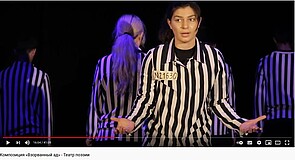
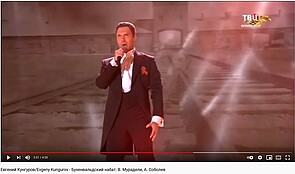
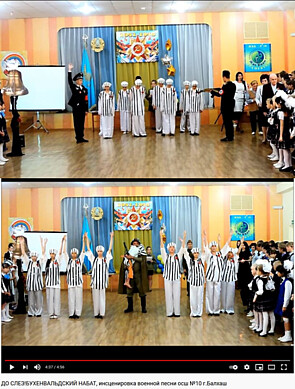
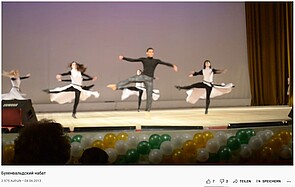
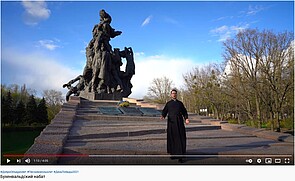
Here are a few examples of recennt performances of Bukhenval’dskii nabat by Russian and Kasakh school students, uploaded on YouTube:
Jeremy Cohen · 25.01.2023
Vladimir versus Volodymyr: Conflicting Russian and Ukrainian Application of Rus’ Heritage
Read more
Violeta Davoliūtė · 01.06.2022
The Pop-Cultural Lineage of Russia’s Anti-Fascist Discourse: Unravelling the Plot of Putins’s War on...
Read more
Mykola Makhortykh · 28.06.2021
#givemebackmy90s: Memories of the First Post-Soviet Decade in Russia on Instagram and TikTok
Read more
Raphael Utz · 27.11.2020
Stalin in our Hearts. The Russian Film 'Sobibor' by Konstantin Khabensky
Read more
Anna Schor-Tschudnowskaja · 29.04.2020
A Pop-Cultural Reappraisal of State Terror? The YouTube Film 'Kolyma – Birthplace of Our Fear' and I...
Read more
Get this article as PDF download (including pictures).